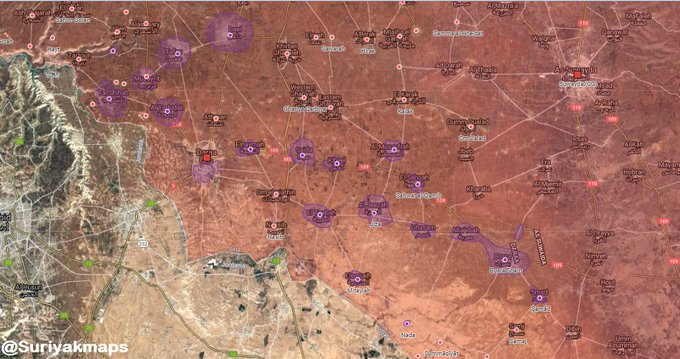
'Two years after the Syrian régime took control over Syria's south, the city of Daraa, which was named "the cradle of the revolution" in 2011, appears melancholic, as fatigue and despair have overwhelmed its residents.
Upon entering the city through the international road connecting Damascus and Amman, one sees a single regular army checkpoint covered with pictures of Bashar Al-Assad and signs that salute the army and notices the scarcity of cars moving toward the city center.
The side road leading to the city appears deserted on both its sides, although the areas are inhabited. The city is divided in two parts: The west, referred to as Daraa the station, and the east, referred to as Daraa the town (the old city). Its residents “sparked the revolution” in mid-March 2011, armed opposition factions took over the city in early 2012, and the régime regained control of the city in July 2018, through the so-called "reconciliation agreement" sponsored by its ally, Russia, after it had carried out dozens of military operations against the factions that controlled the city.
While the city center had been extremely congested before the war, one is now immediately struck by the emptiness in the western part of the city in the afternoon, the limited number of cars passing through the main roads and the scarcity of pedestrians on the streets that are covered with Assad pictures, in addition to few posters of candidates for the People's Assembly (Parliament) elections.
Although most of the markets and stores are open, sales are extremely limited and the owners’ faces are cold.
One of them said: “Most people are penniless. They only buy necessities. Two years ago, the situation was much better. God blessed us in the old days. People covered streets like dust. Daraa would smile at its people and its visitors. ”
While there appears to be few army checkpoints in the city center, the absence of the regular security forces and Russian police on the main and minor roads and streets is also noticeable.
A man in his fifties, after having described the situation in the city and the whole province as "uncomfortable", said "People’s souls have died. There is nothing to rejoice about, to say nothing of high costs. Many people and their children are detained, and we know nothing about them. Additionally, in the countryside, there are constant back and forth operations (launched by the militants who have reconciled/made a deal on one hand and the army and militias allied with it on the other). There are also kidnappings and killings by unknown perpetrators. It's bad, people are tired," he added.
For his part, a man in his thirties said: “The régime has imposed total control over the province, with the situation returning to the way it had been before the revolution erupted, and those who made the deals refuse this. The scene in the city gives the impression of calm and stability, but in truth, it is more akin to a dormant volcano that may erupt at any moment.”
Before 2011, the scenery along the Damascus-Amman Highway was one of farms, fruit-bearing trees, and vegetable fields, a delight for travelers and the many locals who would stroll there. The province with a population of about one and a half million people provided the country with a diversity of crops. Today, however, most of these fields have become barren; the trees are scarce, while the debris is abundant in the cities, villages and towns whose people protested.'
